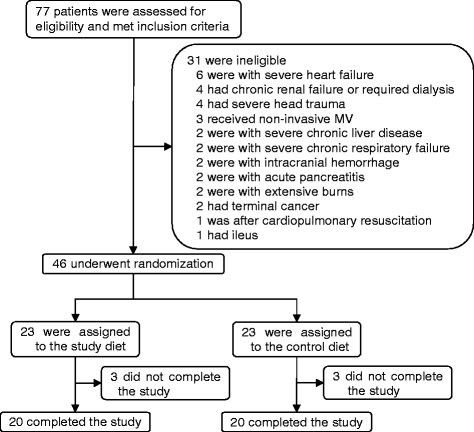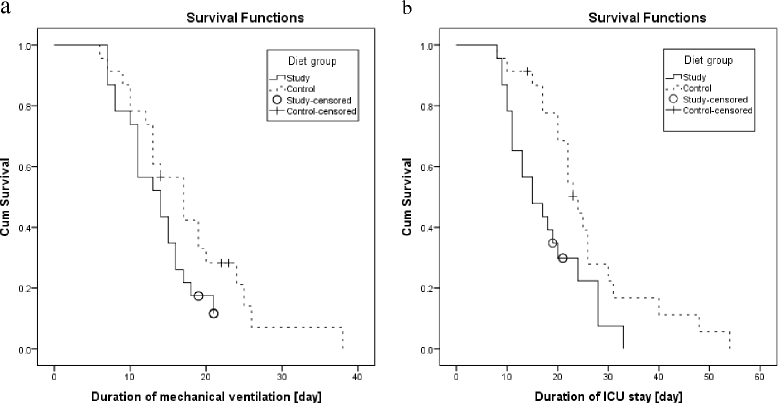Effect of enteral diet enriched with eicosapentaenoic acid, gamma-linolenic acid, and antioxidants in patients with sepsis-induced acute respiratory distress syndrome
- PMID: 26015869
- PMCID: PMC4443653
- DOI: 10.1186/s40560-015-0087-2
Effect of enteral diet enriched with eicosapentaenoic acid, gamma-linolenic acid, and antioxidants in patients with sepsis-induced acute respiratory distress syndrome
Abstract
Background: In this study, the effects of an enteral diet enriched with eicosapentaenoic acid (EPA), γ-linolenic acid (GLA), and antioxidants were compared with a standard enteral diet in critically ill patients with sepsis-induced acute respiratory distress syndrome (ARDS).
Methods: This study was a single-center, prospective, randomized, single-blind, controlled trial in our Advanced Critical Care Center. Patients were randomized to receive a continuous EPA, GLA, and antioxidant-enriched diet (study group), or an isocaloric standard diet (control group).
Results: Twenty-three of 46 patients were in the study group, and the other 23 were in the control group. Duration of mechanical ventilation, incidence of new nosocomial infections, changes over time in Sequential Organ Failure Assessment (SOFA) scores, and 60-day mortality were not significantly different between the two groups. The ratio of partial pressure of oxygen to fraction of inspired oxygen on day 7 was significantly higher in the study group (233.0 [185.5-282.8] vs. 274.0 [225.5-310.8], p = 0.021). Duration of ICU stay was significantly shorter in the study group than in the control group (24.0 [20.0-30.0] vs. 15.0 [11.0-24.0], p = 0.008).
Conclusions: An enteral diet enriched with EPA, GLA, and antioxidants did not improve duration of mechanical ventilation, SOFA score, incidence of new nosocomial infections, or mortality but did favorably influence duration of ICU stay in critically ill patients with sepsis-induced ARDS.
Keywords: Acute respiratory distress syndrome; Antioxidants; Eicosapentaenoic acid; Enteral nutrition; Gamma-linolenic acid; Sepsis.
Figures



References
LinkOut - more resources
Full Text Sources
Other Literature Sources
Research Materials

